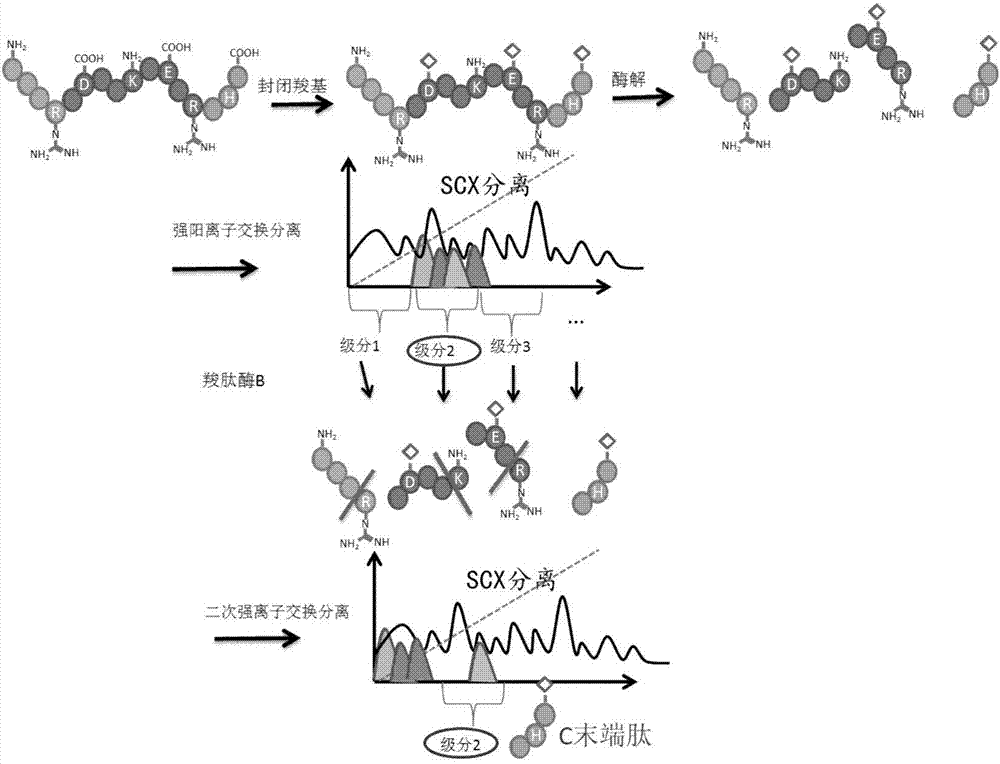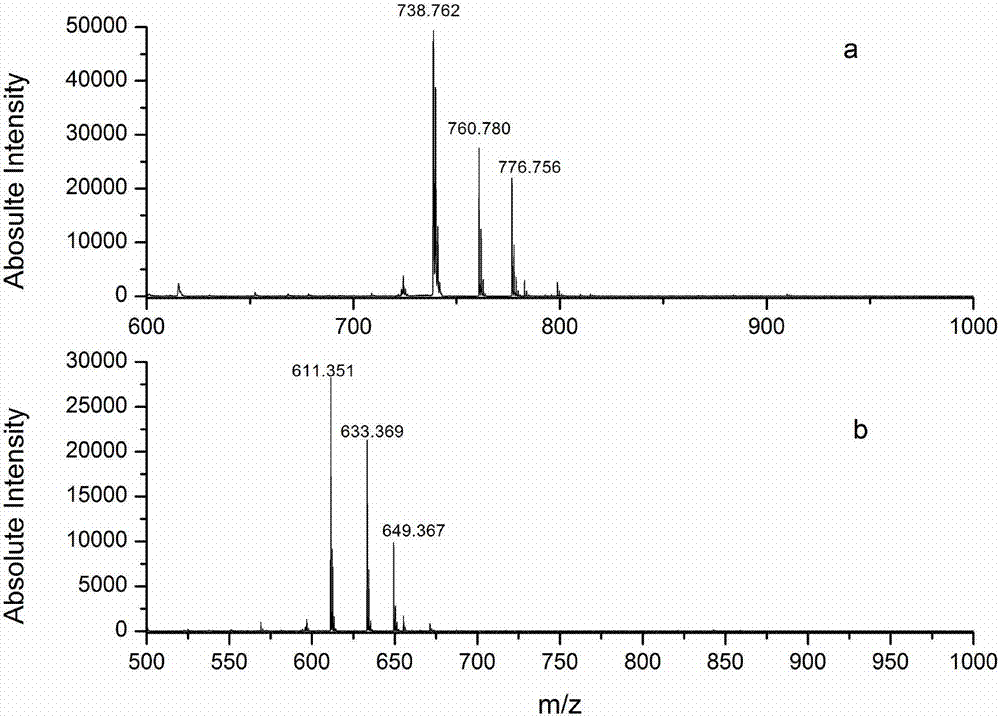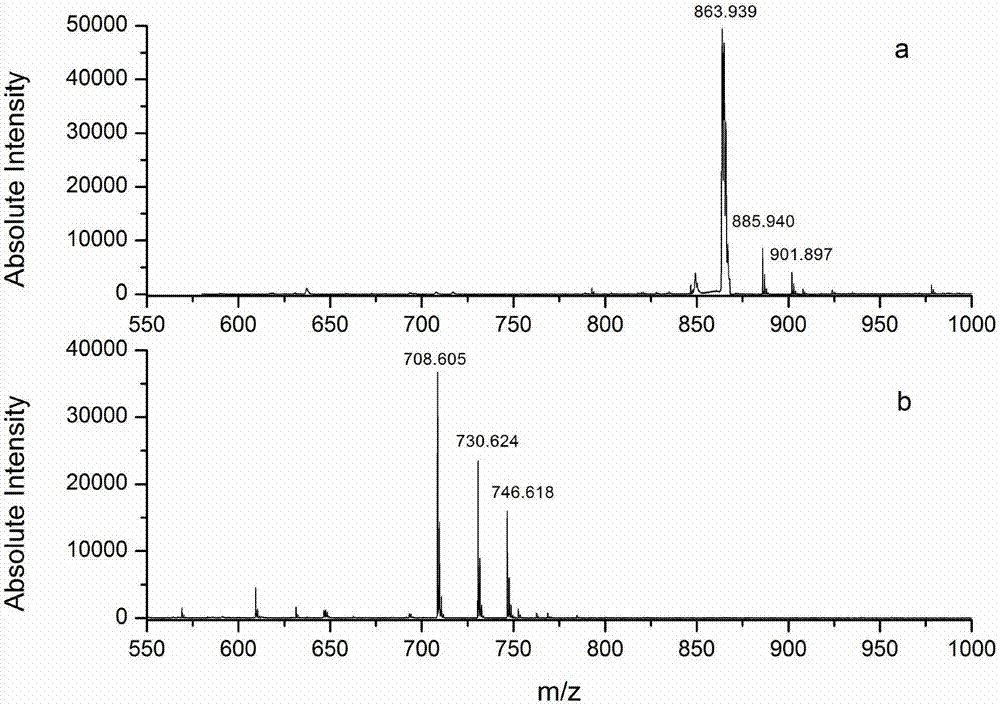Protein C-terminal enriching method based on carboxypeptidase and strong cation exchange chromatography
A strong cation exchange, protein technology, applied in the preparation methods of peptides, chemical instruments and methods, peptides, etc., can solve the problems of low chemical reaction efficiency, cumbersome and time-consuming process, lack of specificity, etc., to promote efficient removal and enrichment. The effect of high collection efficiency and high carboxypeptidase digestion efficiency
- Summary
- Abstract
- Description
- Claims
- Application Information
AI Technical Summary
Problems solved by technology
Method used
Image
Examples
Embodiment 1
[0035] Such as figure 1 As shown, the protein sample first blocked the free carboxyl groups of the C-terminal and side chains at the protein level, and then digested the basic sites of the protein to produce intermediate peptides with basic amino acids at the carboxy-terminal, and ion-exchange chromatography was used to detect The digested products were fractionated to obtain multiple fractions, and finally the basic amino acids at the carboxy-terminal of the intermediate peptide were cut, and each fraction was separated by secondary ion exchange chromatography to exclude intermediate peptides with shifted retention times. Obtain C-terminal peptides of proteins
[0036] Take the peptide segment AVGNHLK ending in K as the sample, dissolve it in 50mM ammonium bicarbonate, and digest it with carboxypeptidase B. The amount of enzyme used is 1 / 5 of the sample mass, and the temperature is 37°C. After 30 minutes of enzymatic digestion, mass spectrometry analysis is carried out. ,Suc...
Embodiment 2
[0038] Take the peptide segment AVGNHLK ending in K as the sample, dissolve it in 50mM ammonium bicarbonate, and digest it with carboxypeptidase B. The amount of enzyme used is 1 / 10 of the sample mass, and the temperature is 37°C. After enzymatic digestion for 30 minutes, perform mass spectrometry analysis , the lysine at the carboxy-terminal of the same peptide was cleaved efficiently and selectively.
Embodiment 3
[0040] Take the peptide AVGNHLK ending in K as the sample, dissolve it in 50mM ammonium bicarbonate, and digest it with carboxypeptidase B, where the amount of enzyme used is 1 / 10 of the sample mass, and the temperature is 37°C. After enzymatic digestion for 45 minutes, perform mass spectrometry analysis , the lysine at the carboxy-terminal of the same peptide was cleaved efficiently and selectively.
PUM
 Login to View More
Login to View More Abstract
Description
Claims
Application Information
 Login to View More
Login to View More - R&D
- Intellectual Property
- Life Sciences
- Materials
- Tech Scout
- Unparalleled Data Quality
- Higher Quality Content
- 60% Fewer Hallucinations
Browse by: Latest US Patents, China's latest patents, Technical Efficacy Thesaurus, Application Domain, Technology Topic, Popular Technical Reports.
© 2025 PatSnap. All rights reserved.Legal|Privacy policy|Modern Slavery Act Transparency Statement|Sitemap|About US| Contact US: help@patsnap.com



